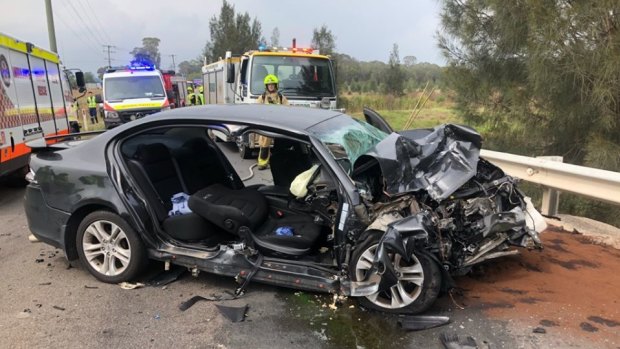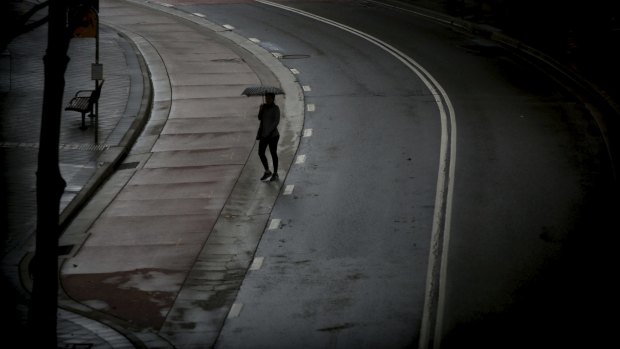This was published 4 years ago
'Like soap': Heavy rainfall and debris creates havoc on the roads
Heavy rainfall and dirty asphalt have created a deadly blend on NSW's roads, with ambulance crews observing a 35 per cent jump in the number of road accidents following the state's biggest deluge in months.
Emergency services are urging drivers to be more cautious after NSW Ambulance attended to more than fifty motor vehicle accidents on Friday, including two fatalities.

NSW Ambulance at the scene of a fatal crash on Friday. Credit: NSW Ambulance
Those deaths, a 65-year-old motorcyclist who crashed into a barrier near Blacktown and a 32-year-old driver in the Hunter region, bring the state's road toll to eight since the beginning of the year.
Some motorists have been caught off-guard by the relentless rainfall, with the NSW State Emergency Service (SES) making five flood rescues on Saturday.
“Some of those were a result of people being stranded in vehicles,” an SES spokesperson said, emphasising that motorists must not attempt to enter floodwater.
On Saturday, a low-pressure system moving down from the Gold Coast put Tweed Heads on high alert.
“A lot of the downpours happened very quickly this morning, causing those conditions we call flash-flooding.”
Rain alone isn't responsible for the hazardous road conditions, long months without significant rainfall have produced an excess of debris, causing roads to "become like soap" said NRMA spokesperson Peter Khoury.
“You get a build-up of soot on the roads, petrol, and oil, making it very slippery as soon as it gets wet.”
“We’re not surprised there’s been an increase in accidents.”
Mr Khoury also says potholes become an issue in wet conditions, as heavy rainfall produces cracks in the road. Add the constant pressure of vehicles travelling over the damaged areas and the asphalt begins to break apart.
Despite the adverse weather, Mr Khoury reports only a minor increase in requests for roadside assistance.
"Yesterday we took 4,624 calls – up 18 per cent on the day before and 16 per cent on the previous Friday. This isn't too bad."

Umbrellas come out on the streets of Bondi Junction as light rain falls in Sydney.Credit: James Alcock
He believes most drivers understand the risks associated with the break of a dry spell.
“We can go so long without rain here in Australia that people have become accustomed to it.”
Over the weekend, the low-pressure system is expected to move south through the Mid North Coast before easing off. Heavy rain and thunderstorms are expected across the state into next week.
Since midnight Friday, the SES has responded to 443 incidents.
In a police media release, State Emergency Operations Controller Deputy Commissioner Gary Worboys reminded road users to "take extra care" in wet weather.
“The key for motorists is drive or ride to the conditions; reduce your speed to make sure there’s enough braking distance between you and the vehicle in front."